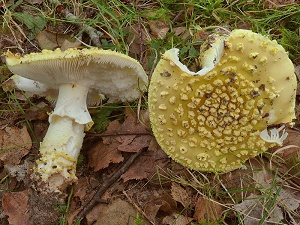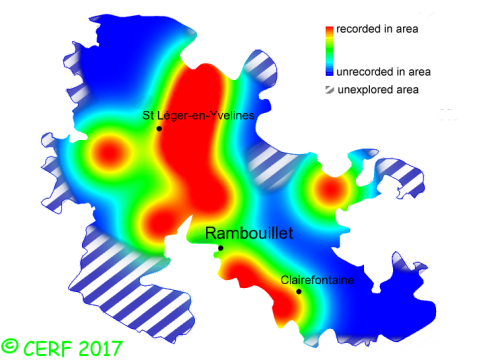| Amanita franchetii (Boud.) Fayod |
|
|
|
|
|
|
The cap is yellow to dull brown. The cap surface is spotted with spiky sulphur-yellow warts, especially towards centre, not viscid nor sticky. The stem is striate above ring, with a membranous also striate ring. The flesh is unchanging; the odour is unpleasant; its texture is fibrous. The gills are white, free, crowded . The spore print is white. This species is mycorrhizal. It grows on the ground, in broad-leaved (sometimes coniferous) woods, forest edges, on a rather acid soil, with birch, oak. The fruiting period takes place from July to November.
Chemical tests : none. Distinctive features : pale yellow to ochre-brown cap, with a yellow universal veil disrupting into pointy long-lasting yellow warts; yellow flesh just beneath cap surface; white large membranous ring, striate above; flesh with faint odour, turning slightly brown when cut Amanita franchetii is quite rare and scattered in the forest of Rambouillet, and is quite rare, more generally speaking . | ||
|
page updated on 14/01/18

